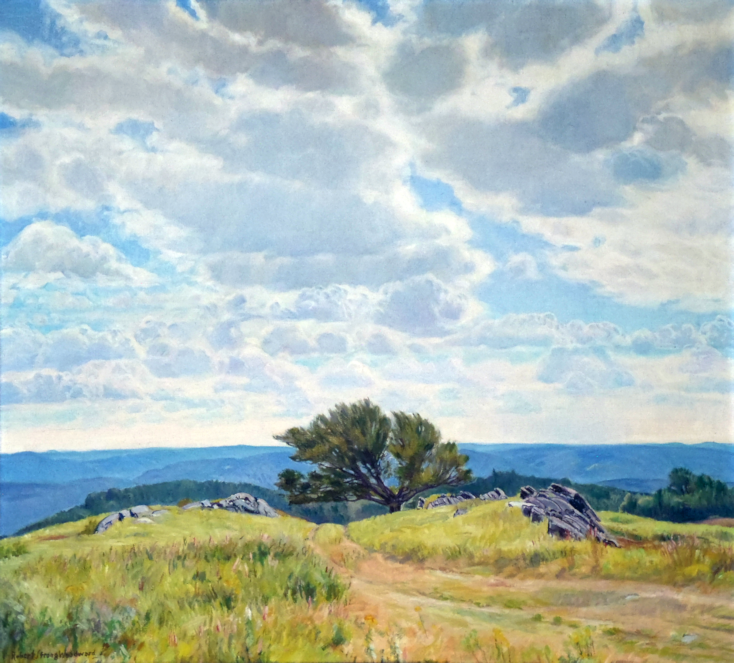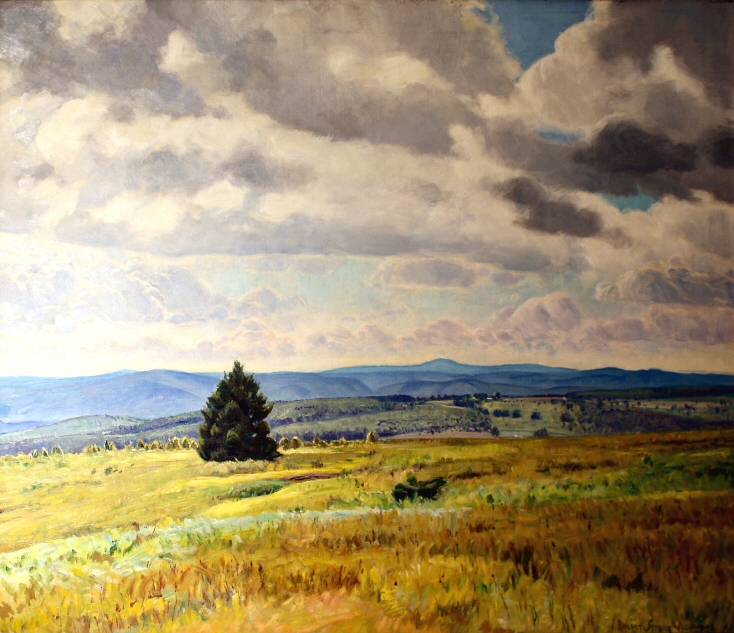Quick Reference
Unknown - 1949?
Heath Pasture, MA
Oil on Canvas
Landscape
Pastures, Landscapes & Views
25" x 30"
Vose Galleries (Boston), 1949
Unknown
NA
Featured Artwork: Heights of Heath #2
RSW's Diary Comments
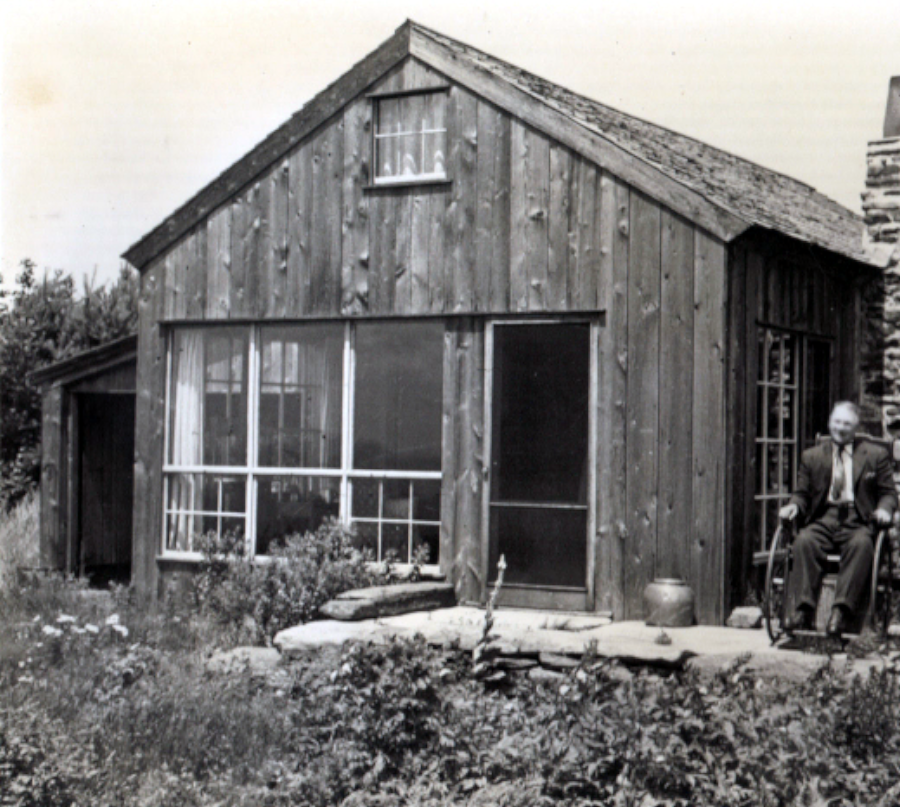
 Heath Cottage Windows
Heath Cottage Windows
You can see the west window in this picture. The
front-facing window is south. The window you can
see, inside, through the south window is the west.
This painting was painted from the front-facing
south window or from where Woodward is sitting.
The diary comment for Heights of Heath #1:
"Painted from west window of Pasture House in the early summer of 1947. Flat, horizontal pasture stretches in low foreground, with very dark small, symmetrical pine in left center, silhouetted against the horizon band of distant blue mountains crowned by rounded Greylock. A dramatic tangled mass of summer clouds, broken by small patches of blue tubes up the upper 2/3 of the canvas."
Editor's Note- July 28, 2023:
There is not much to update on this page or its sister, Heights of Heath #1. Both pages were last updated in September of 1922. However, we want to point out that we just recently updated Heath Horizon (July 2023) and made the same complaint about Woodward missing a painting diary comment for a painting made in the 1940s. The late 1940s no less. It simply makes no sense unless it has to do with Beech Tree paintings themselves. It feels like there is a reason for this. We just do not know what it is.
Additional Notes
...continued from Heights of Heath #1
We have established that Woodward used the word "heights" frequently in names of his paintings between 1931 and 1941 and that his brush
style often indicates what decade he painted something but the style of the painting above does not seem to fit the time period. This is not an exact
science, we could very well be wrong, but if we are not then what are the possibilities this painting was painted later than 1947 the year Heights
of Heath #1 was painted and how could Woodward leave it out of his Painting Diary?
It is a weak argument based purely on
speculation but as the late forties got closer to the 1950s many of Woodward's records start to thin out. The year a painting titled Heights of Heath
exhibits at the Vose gallery in Boston in 1949 is just 3 years from when Woodward would retire from painting entirely. We know from his 1949 personal
diary that he was struggling both physically and emotionally. It is a dark time from him. He is feeling isolated and alienated, with growing concerns
financially. Mark, whom he loved like a son, has been away for six years serving in
the miltary in WWII and upon his discharge went away for school. His mother is also declining and is now in a nursing facility in Greenfield. She is 92
years old, and truly was his heart and soul. She will pass in 1950.
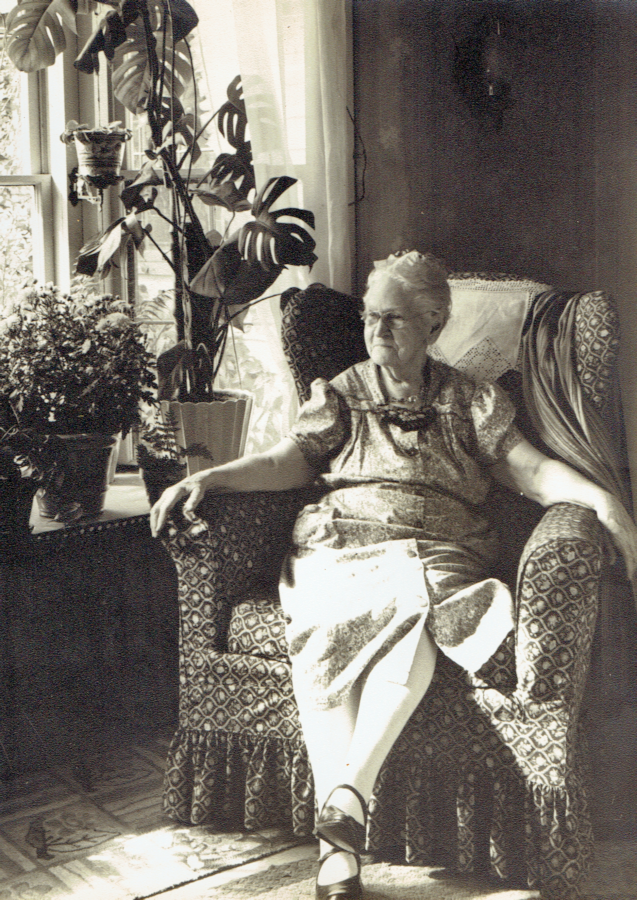
 Woodward's mother, Mary
Woodward's mother, Mary
Strong, around 1940 sitting by
the bay window at Southwick.
While Woodward still painted beautiful paintings he painted less frequently. We believe he did
a lot of things less frequently, like keep up on his record keeping. He is developing some sort of neuromuscular disorder effecting his hand control to
which his mother also suffered and his stomach issues that have plagued him his entire life due to the injury he suffered in 1906 are worsening. He is in
a great deal of discomfort.
His Heath Pasture Place would burn in 1950 and so it is possible that this painting is one of the last
Beech Tree paintings Woodward made. Could it also be the painting that hung at Vose? While it may never be
known, it is rare for a painting Woodward liked to sit in his studio for two years before exhibiting. It makes much more sense that a painting he painted in
1949, also exhibited in 1949. With that being said, there are examples where paintings sat for a while before exhibiting. Still, much of this is attributed to
Woodward's productivity. For instance, records show that only 8 new paintings exhibited in 1930, but 1931 records show as many as 150+ new paintings.
No one believes Wooward painted 150 paintings in a year. The math alone cancels the possibility. He would have to paint 3 paintings a week, not taking
any days off. It is reasonable to think he had been painting frequently over a year, or a year and a half period of time when "new paintings" were less
frequently appearing at shows. He has to unload the old merchandise before he can show new material. This is not the case between 1947 and 1949.

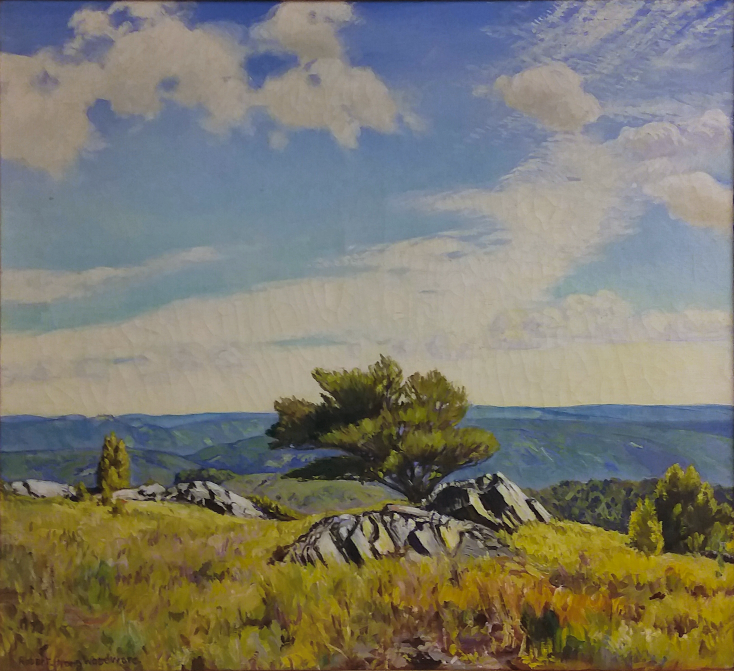
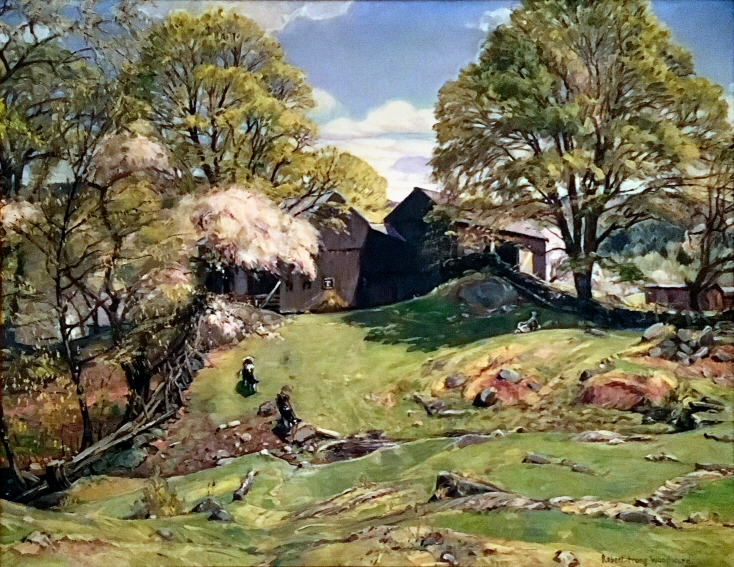
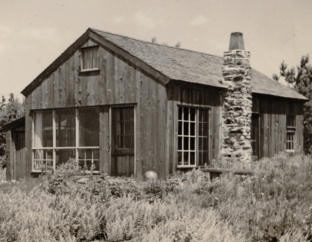
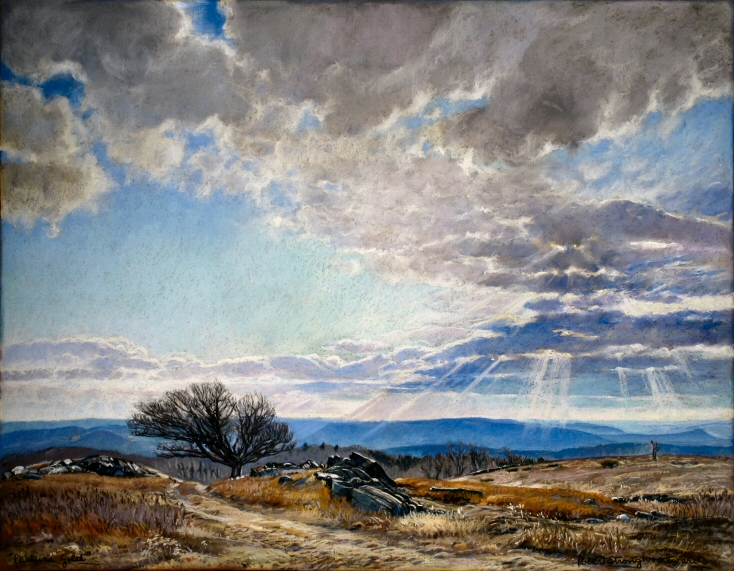
.png)

